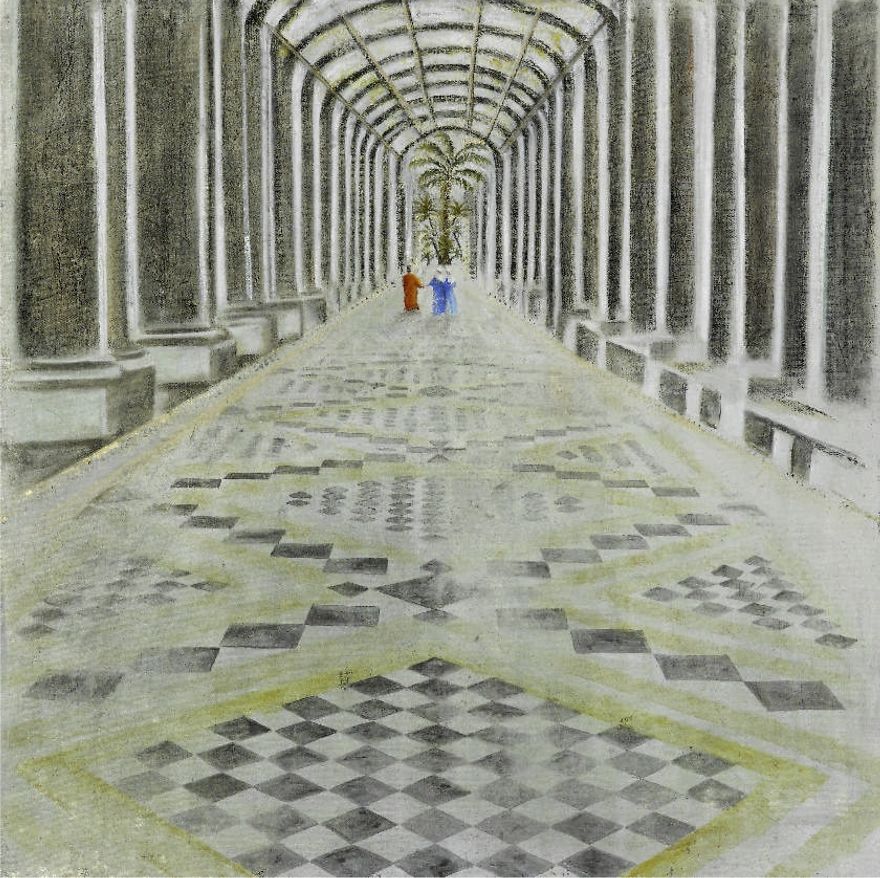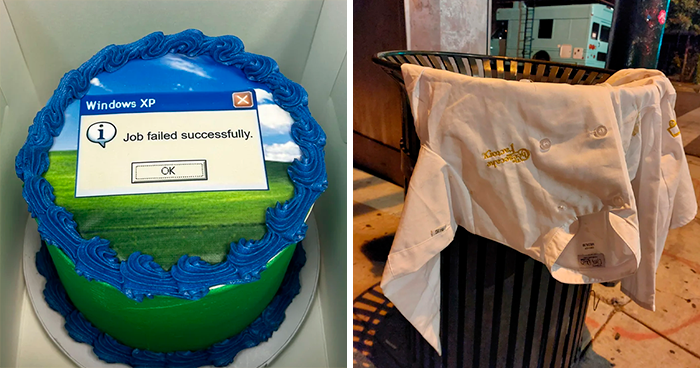Take a look at one of the paintings by Katherine Bakhoum Tisne: The black tree. Five figures in a dark landscape. Darkness like expectation, and colors challenging the eye. The man in blue is leaning up against the trunk of the tree. It is hardly a tree. It is a brain, a brain hibernating in history. Can the man in his blue robe feel it shake, quiver? Probably not: the work of the tree is slow. It has a long way to go.
Katherine Bakhoum’s art comes up out of an Egyptian childhood and from the distance of a life spent in France. What is left unsaid is as important as what is shown. A glance is not enough. Stand in front of these canvases for a while. Take your time. Linger. Do not slide your finger across the screen of the iPad. There is much more here than meets the eye. Decorative yes, as in old orientalism, when everything was texture and what wasn’t texture was veiled, — decorative but also tantalizing, a reincarnation of old spirits, dervishes, orientalist motifs and the stuff of a once-powerful civilization, the better to suggest it all might just come to life again.
Bakhoum works quickly but what she paints is slow. Standing on the shore, or on a jetty, the pastel figures often look as they had always been there, hoping against hope that something will happen. They are not waiting for the tide to come in, they are waiting for whatever might appear on the horizon. When nothing does, the painter makes it happen. Color dances. “Stop him from walking into the dark sea of this dream,” says the turquoise robe on the man moving in deeper. “Come to the other side of the canvas. Talk to him. Find out who he is.”
In the same spirit, at the end of a pier, a dancing man’s trousers are yellow. He is almost part of a circus troupe, almost, but not quite. The sea is too gray, the landscape is too lonely to evoke a circus and a circus crowd. Who is watching here? Who is listening? In the same way, in another work, in the desert tundra, the shepherd tends his sheep in a bright red shepherd’s gown. The sheep do not notice, but we do. We notice that the shepherd wants to be noticed. Is it just for his beauty? Or would we like to hear his song? And the whirling dervish with the mad glint in his eye: isn’t he glancing our way, wondering whether we know why the painter chose to capture the lightness of his robes, with the thick white of her pastels, set him in the middle of that canvas, as though he was still an active spirit, whirling beyond the walls of the gallery?
The choice of ancient subject matters, the echo of orientalist pieces in the collages, like the echo of the appeal of ancient gestures, of foreign lands, and domestic tapestries, all this weaves up out of Katherine Bakhoum’s creations. Sometimes we only have the line of a horizon on which to hang our imagination, sometimes we only have the trace of a profile in the shadows. What we always have is a persistent belief in beauty.
Where there is beauty, there is hope. Katherine Bakhoum has abandoned neither.
Enquire about all available works: info@jmartmanagement.com
JM Art Management
More info: jmartmanagement.com
Image credits: www.jmartmanagement.com
Danseuse Rouge, 2018
Image credits: www.artsy.net
Danseuse Rouge, 2018
Mixed Media / Pastel with Glass Frame
51 × 38 in
129.5 × 96.5 cm
La femme aux perles, 2018
Image credits: www.artsy.net
La femme aux perles, 2018
Mixed Media with Glass Frame
25 × 25 in
63.5 × 63.5 cm
L’enfilade, 2018
Image credits: www.artsy.net
L’enfilade, 2018
Mixed Media / Glass Frame
47 × 47 in
119.4 × 119.4 cm
Le Trianon, 2018
Image credits: www.artsy.net
Le Trianon, 2018
Mixed Media with Glass Frame
45 × 79 in
114.3 × 200.7 cm

 Dark Mode
Dark Mode 

 No fees, cancel anytime
No fees, cancel anytime 



































4
0